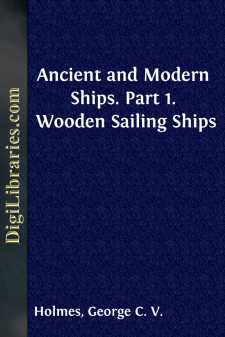Categories
- Antiques & Collectibles 13
- Architecture 36
- Art 48
- Bibles 22
- Biography & Autobiography 813
- Body, Mind & Spirit 142
- Business & Economics 28
- Children's Books 14
- Children's Fiction 11
- Computers 4
- Cooking 94
- Crafts & Hobbies 4
- Drama 346
- Education 46
- Family & Relationships 57
- Fiction 11829
- Games 19
- Gardening 17
- Health & Fitness 34
- History 1377
- House & Home 1
- Humor 147
- Juvenile Fiction 1873
- Juvenile Nonfiction 202
- Language Arts & Disciplines 88
- Law 16
- Literary Collections 686
- Literary Criticism 179
- Mathematics 13
- Medical 41
- Music 40
- Nature 179
- Non-Classifiable 1768
- Performing Arts 7
- Periodicals 1453
- Philosophy 64
- Photography 2
- Poetry 896
- Political Science 203
- Psychology 42
- Reference 154
- Religion 513
- Science 126
- Self-Help 84
- Social Science 81
- Sports & Recreation 34
- Study Aids 3
- Technology & Engineering 59
- Transportation 23
- Travel 463
- True Crime 29
Ancient and Modern Ships. Part 1. Wooden Sailing Ships
Description:
Excerpt
PREFACE.
An endeavour has been made in this handbook, as far as space and scantiness of material would permit, to trace the history of the development of wooden ships from the earliest times down to our own. Unfortunately, the task has been exceedingly difficult; for the annals of shipbuilding have been very badly kept down to a quite recent period, and the statements made by old writers concerning ships are not only meagre but often extremely inaccurate. Moreover, the drawings and paintings of vessels which have survived from the classical period are few and far between, and were made by artists who thought more of pictorial effect than of accuracy of detail. Fortunately the carvings of the ancient Egyptians were an exception to the above rule. Thanks to their practice of recording and illustrating their history in one of the most imperishable of materials we know more of their ships and maritime expeditions than we do of those of any other people of antiquity. If their draughtsmen were as conscientious in delineating their boats as they were in their drawings of animals and buildings, we may accept the illustrations of Egyptian vessels which have survived into our epoch as being correct in their main features. The researches now being systematically carried out in the Valley of the Nile add, year by year, to our knowledge, and already we know enough to enable us to assert that ship building is one of the oldest of human industries, and that there probably existed a sea borne commerce in the Mediterranean long before the building of the Pyramids.
Though the Phœnicians were the principal maritime people of antiquity in the Mediterranean, we know next to nothing of their vessels. The same may be said of the Greeks of the Archaic period. There is, however, ground for hope that, with the progress of research, more may be discovered concerning the earliest types of Greek vessels; for example, during the past year, a vase of about the eighth century b.c. was found, and on it is a representation of a bireme of the Archaic period of quite exceptional interest. As the greater part of this handbook was already in type when the vase was acquired by the British Museum, it has only been possible to reproduce the representation in the Appendix. The drawings of Greek merchant-ships and galleys on sixth and fifth-century vases are merely pictures, which tell us but little that we really want to know. If it had not been for the discovery, this century, that a drain at the Piræus was partly constructed of marble slabs, on which were engraved the inventories of the Athenian dockyards, we should know but little of the Greek triremes of as late a period as the third century b.c. We do not possess a single illustration of a Greek or Roman trireme, excepting only a small one from Trajan's Column, which must not be taken too seriously, as it is obviously pictorial, and was made a century and a half after many-banked ships had gone out of fashion.
In the first eight centuries of our era records and illustrations of ships continue to be extremely meagre....


